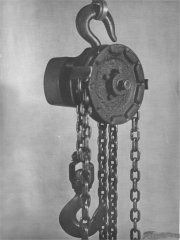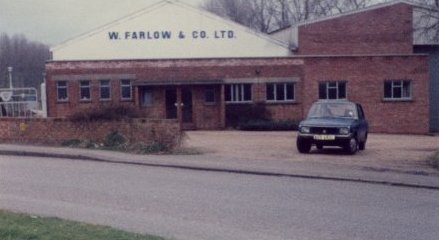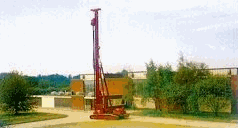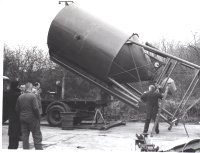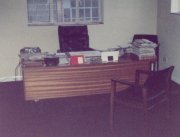
After being demobbed in February 1948, I found myself at the crossroads of life, something that happens to everybody. What am I going to do, how was I going to support my family? After serious thought, of whether to return to my original trade, printing, or carry on in some form of engineering. I thought the experience I had gained both on war work and in the RAF, I would continue in engineering. The result, go into partnership with my brother Laurence, and start up all over again as we did ten years ago, in the garage beside the house, with 2 lathes and other machinery. This time, things were very different. Everything was on ration; food, petrol, and steel, which would be our life blood in business. Work was also scarce, as the rebuilding programme had not started. Laurence contacted his old boss's son George Tufnell, who had started an engineering company with a chap called William Farlow, they had been working through the war, and were well established, meaning they had contacts and a larger steel ration. Mr Farlow wished to retire from the business and George was looking for a partner and people with skills. In 1947 we formed a limited company, retaining the name W. Farlow & Co Ltd purely on the strength of their bigger steel ration ( we were still going 35 years later) We occupied two railway arches at Leytonstone London E11 with a staff of eight. Working twelve hour shifts night and day, six days per week. It was quite normal to work a night shift and then deliver a truck load of goods into London.
We were making steel cutting blades for shearing machines, which had to be electro-engraved with the name SAMSON. The routine was to drive home the loaded truck, get a few hours sleep while my wife Irene would sit and engrave hundreds of blades. She also used to paint various machine parts. Come to think of it, I don't think we ever paid her! Within a year, we decided to find larger premises and as a result, increased the company from three directors, Laurence, George and myself, to include George's mother (company secretary) and my father, who was a qualified toolmaker. Dad was awarded the task of finding new premises. He came back a week later and said he had promise of premises at Sudbury, Suffolk. We, being Londoners said "where is Sudbury?" He explained, he had visited Sudbury Town Council, who put him on to a man called Arthur Fulford of Akins Fulford Ltd who had land behind their factory in Cornard Road, and would build us a factory of 4000 sq. feet. We raised the necessary and told Mr. Fulford to go ahead. The site was originally a lime pit owned by Allen & Boggis.
In the summer of 1949, I came to Sudbury and began the electrical installation in preparation of the arrival of our machinery from Leytonstone, over a period of three weeks. Each of the five families found houses within a radius of five miles of Sudbury. As the work slowly closed down in London, the machines were moved by our own transport and installed at Cornard Road, so the directors moved to their new homes Laurence rented a house in Twinstead, George bought a house at Edwardstone, Dad went to Acton, Mrs Sherratt (Georges mother) to Little Waldingfield, and I bought a house at Bures.





